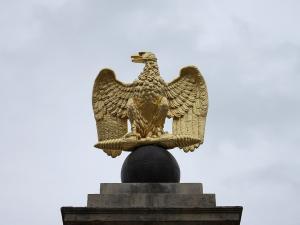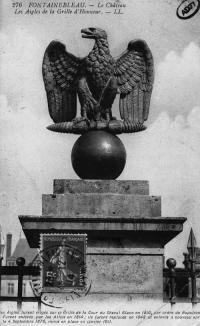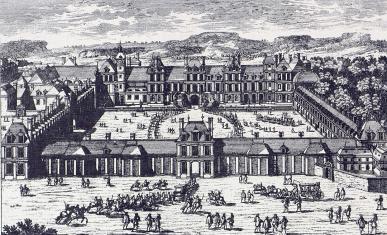2021 The Year of Napoleon
A tumultuous journey for the Napoleonic eagles at the Château de Fontainebleau

Date of publication of the page and author of publication
Created the: - Updated:
Of all the emblems of the First Empire, the most famous is undoubtedly the imperial eagle, along with the industrious bees and the collar of the Legion of Honour. The eagle, which can be seen on the imperial coat of arms, is indissociable from the Napoleonic epic. Why did Napoleon choose this animal as an imperial symbol? Explanations.
When he was proclaimed Emperor of the French on the 28th Floreal Year XII (18th May 1804), Napoleon had to choose his emblems. Several animals were suggested to him such as the lion, the elephant and the eagle.
Since the antiquity, the eagle had been associated with military power and glory. The eagle was the attribute of Zeus (or Jupiter for the Romans), the sovereign god of Mount Olympus, and acted as his messenger. The eagle was also associated with divinatory practices where celestial signs such as the flight of birds were read.
The bird was also the emblem of imperial Rome - the Roman eagle(aquila, in Latin) being the most significant, respected symbol of the Roman legions - and later, of other empires throughout history. Therefore, it is not surprising that Napoleon, who was passionate about Roman history, chose this imperial symbol, and the day after his coronation, he had it placed on every flag of the Napoleonic armies.

By choosing the Château de Fontainebleau as one of his main residences, Napoleon wanted "the true home of kings, the house of the ages" to reflect the image of the Empire, and therefore its emblems.
So that’s what he did! At the entrance of the Château de Fontainebleau, two golden lead eagles would overlook the ceremonial gate, like two guards showing onlookers and visitors that in front of them stood the palace of the Emperor of the French.
The gate on which the two eagles were placed replaced the former west wing known as the "Ferrara Wing", which was demolished at Napoleon's request in 1808. Since the Cour du Cheval-Blanc was no longer enclosed, it became a courtyard of honour and no longer a Cour des Offices (a courtyard housing outbuildings and kitchens).
The two eagles of the Château de Fontainebleau, which were a landmark of the imperial regime, had a rather tumultuous journey after the fall of the First Empire. Because of their highly symbolic significance, they were repeatedly withdrawn and placed back with the successive political regimes.
After Napoleon's abdication in April 1814, the two eagles were taken away by the Allies in the same year and were put back in 1848 after the "February Revolution", which put an end to the July monarchy and proclaimed the Second Republic. They were taken away again on 4th September 1870, when the Third Republic was proclaimed after the Second Empire, as the imperial eagles were clearly not in the taste of the new republican regime. However, they were placed back in 1911 and can still be seen today.
